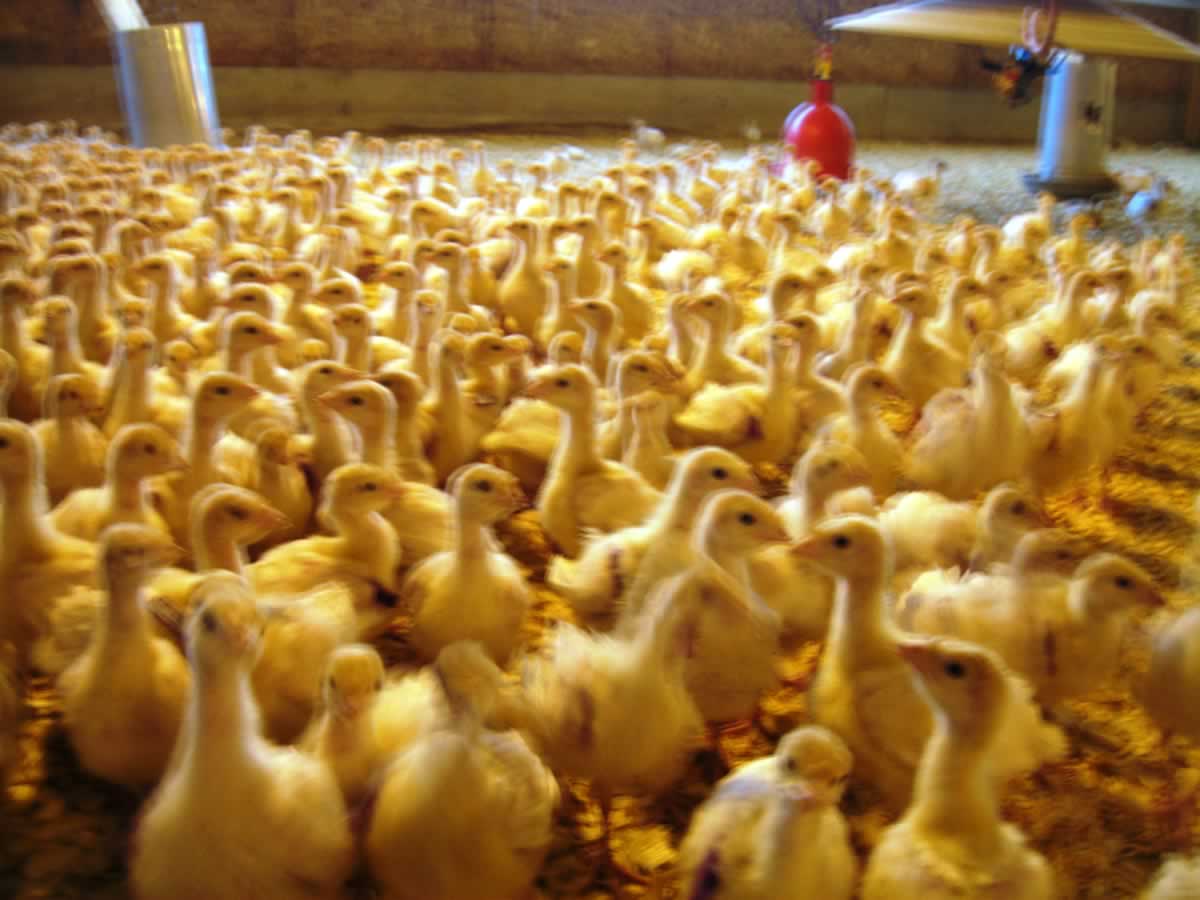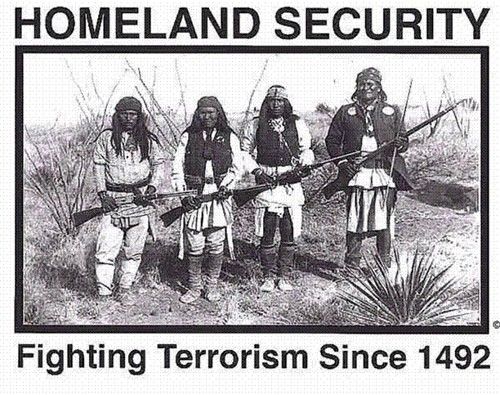Imagine if the Nazis won the Second World War. Yes, yes, I know there’s a TV show about that — but stay with me.
So imagine: the Nazis won, and then every year, on the day when we currently hold Holocaust Remembrance Day, they celebrate with a national holiday called “Eternal Gratefulness for the Fruits of Industry.”
In the Nazi national holiday, citizens bizarrely demonstrate no recollection whatsoever of the systematic, bureaucratic state-sponsored persecution and murder of approximately six million Jews.
Instead, they share with each other strange stories of how the German nation overcame all obstacles through generosity and love, manifested in amazing industrial advancements attributed to the wonderous exceptionalism of the German nation. Stories that have literally no resemblance to real Nazi history.
Guess what.
We’re the Nazis. We committed acts of genocide, enslavement, mass murder and ethnic cleansing. And we won the war — a war that never really ended. But we carry on as if there’s no war.
Except there is a war. And it’s not just the Jews and ‘the Indians’ who are the victims. The war has turned on us. But we still don’t see it.
Instead, we sleepwalk into it, perpetrate it on ourselves, in the very act of collectively accumulating hundreds of thousands of air miles pumping colossal quantities of carbon dioxide into an already over-polluted atmosphere, and over-consuming millions of turkeys bred in brutal factory farms — giant animal concentration camps — that would probably make the Nazis mildly proud.

We are at the pinnacle, right now, of a hidden holocaust. So hidden that our national and global culture, fueled by our advertising-driven media system, sanitises this holocaust with pomp and celebration.
The word “holocaust” is a Greek word, which means “sacrifice by fire.” It conveys an event, the scale and horror of which, transformed the course of world history.
The Nazi holocaust was, indeed, a uniquely horrific genocide, whose enormity and systematic character is barely imaginable, designed to exterminate wholly the Jewish people, physically, socially, culturally, from the face of the Earth.
The idea of a ‘hidden holocaust’ conveys an ongoing campaign of global homicide, murder, whose scale and enormity is such that one feels that the word ‘holocaust’ does, certainly loosely speaking, apply. It is ‘hidden’, in the sense that, although experienced by millions of people around the world both historically and today, it remains invisible, officially unacknowledged — thanks to a broken media system that fails, chronically, to join the dots.
This ‘hidden holocaust’, is escalating, accelerating, intensifying; according to all expert projections from the social and physical sciences, it may culminate in the extinction of the human species, unless we take immediate drastic action, now.
The ‘hidden holocaust’ is not an unfortunate aberration from our civilization, which, perhaps with some choice reform, still represents the peak of human development. Rather, the ‘hidden holocaust’ is integral to the very structure, values and activities of our civilization. Unless we see this, and transform it, we will all perish in a holocaust of our own making.
The ‘hidden holocaust’ began at the dawn of modern civilization itself, especially in the pivotal voyages for European colonial expansion and trade from the fifteenth century to the nineteenth centuries. Spanish, Italian, Portuguese, Dutch, English and other explorers ventured out from their home countries in search of new wealth and new land in all corners of the globe. They went to the continents of America, Africa and Asia and set up colonies and trading outposts.
Colonists and settlers had all sorts of intentions. Some of them had capital, and were simply looking for new investment opportunities. Others were trying to escape lives of hardship at home to make new lives for themselves with a fresh start by settling in the colonies. Others wanted to deliver the message of Christianity to native populations. Almost all of them saw themselves as part of the inevitable historical momentum of Progress, bringing the fruits of European civilization to backward peoples.
It is, though, irrelevant what these different individuals intended. Because the sum, accumulated outcome of European imperial expansion involved massive, systematic violence.
Violence of all kinds.
Wholesale massacres, forced labour camps, disease, malnutrition due to the imposed conditions of economic deprivation, mass suicides due to depression and cultural alienation.
As Irving Louis Horowitz argues in Genocide: State Power and Mass Murder, “the conduct of classic colonialism was invariably linked with genocide.”
American Holocaust
Starting from 1492, when Christopher Columbus is said to have discovered the Americas, the deadly conquest commenced. The complex civilizations of Native Americans, over the next few centuries, were devastated. In his Rivers of Blood, Rivers of Gold, British historian Mark Cocker reviews reliable estimates of the death toll:
“Eleven million indigenous Americans lost their lives in the eighty years following the Spanish invasion of Mexico. In the Andean Empire of the Incas the figure was more than eight million. In Brazil, the Portuguese conquest saw Indian numbers dwindle from a pre-Columbian total of almost 2,500,000 to just 225,000. And to the north of Mexico… Native Americans declined from an original population of more than 800,000 by the end of the nineteenth century. For the whole of the Americas some historians have put the total losses as high as one hundred million.”
Although the majority of these deaths occurred due to the impact of European diseases, disease alone does not explain the variations of death toll rates in different parts of the Americas. The key factors in which diseases operated were ultimately the kinds of repressive colonial social formations imposed on natives by European invaders, consisting of different matrices of forced labour regimes in mines and plantations, mass enslavement for personal domestic use of colonists, religious and cultural dislocation, and so on.
Ultimately, what wiped out the Native Americans was a system of relentless extraction.
As David Stannard concludes in his extensive study of the genocide, American Holocaust: The Conquest of the New World, these factors accelerated and intensified the impact of disease. He further describes the colonists’ strategic thinking:
“At the dawn of the fifteenth century, Spanish conquistadors and priests presented the Indians they encountered with a choice: either give up your religion and culture and land and independence, swearing allegiance ‘as vassals’ to the Catholic Church and the Spanish Crown, or suffer ‘all the mischief and damage’ that the European invaders choose to inflict upon you.”
You’re either with us or against us.
African Holocaust
But the system of genocidal extraction in the Americas was part an emerging world system of imperial profiteering through death-dealing.
When Native Americans continually died out en masse, a new labour force was needed. We got them from Africa.
Cue the Trans-Atlantic Slave Trade, which produced the protracted deaths of truly vast, incomprehensible numbers of people. While slave structures had already existed locally, it certainly did not exist on the vast scale it reached in the course of European interventions.
English, French, Dutch, Spanish, Danes, and Portuguese slave-traders started out by raiding villages off the West African coast. The slave trade, lasting from the 1450s to the 1860s, consisted of “a series of exchanges of captives reaching from the interior of sub-Saharan Africa to final purchasers in the Americas.” An observer at the time, British journalist Edward Morel wrote in The Black Man’s Burden: “For a hundred years slaves in Barbados were mutilated, tortured, gibbeted alive and left to starve to death, burnt alive, flung into coppers of boiling sugar, whipped to death.”
From the sixteenth to nineteenth centuries, the total death toll among African slaves being in transhipment to America alone was as high as 2 million, reports R. J. Rummel in his Death by Government. Although the many millions who died “in capture and in transit to the Orient or Middle East” is unknown, among the slaves “kept in Africa some 4,000,000 may have died.” Overall, in five centuries between nearly 17,000,000 — and by some calculations perhaps over 65,000,000 — Africans were killed in the transatlantic slave trade.
University of Essex sociologist Robin Blackburn in The Making of New World Slavery demonstrates the centrality of an emerging extractive capitalist economy to the growth of slavery. The momentous profits of slavery accumulated in the “triangular trade” between Europe, Africa and America, and contributed directly to Britain’s industrialization.
For instance, the profits from triangular trade for 1770 would have provided from 20.9 to 55 per cent of Britain’s gross fixed capital formation. The question of industrial capital formation, however, is only part of the story.
The Trans-Atlantic Slave Trade was an indispensable motor in an emerging extractive world system under the mantle of the British empire. The mechanization of cotton textiles, originally produced in American plantations manned by African slaves, was overwhelmingly the driving force in British industrialization.
Indian Holocaust
And as the British empire expanded, it left its mark elsewhere.
In his landmark study, Late Victorian Holocausts: El Niño Famines and the Making of the Third World, historian Mike Davis shows how British imperial policy systematically converted droughts in South Asia and South Africa into foreseeable but preventable deadly famines.
In India, between 5.5 and 12 million people died in an artificially-induced famine, although millions of tons of grains were in commercial circulation. Rice and wheat production had been above average for the previous three years, but most of the surplus had been exported to England.
“Londoners were in effect eating India’s bread,” writes Davis.
Under “free market” rules, between 1877 and 1878, grain merchants exported a record 6.4 million hundredweight of wheat to Europe while millions of Indian poor starved to death.
Crucially, Davis argues that these people died:
“… not outside the modern world system, but in the very process of being forcibly incorporated into its economic and political structures. They died in the golden age of liberal capitalism; many were murdered by the application of utilitarian free trade principles.”
Division of the World
This violence was, therefore, not accidental to the European imperial project. It was integral, systematic, as a solution to the problem of native resistance.
Between about 1870 and 1914, European imperial policies received a new lease of life, resulting in the intense scramble for control over eastern Asian and African territories.
Almost the entire world was divided up under the formal or informal political rule of Britain, France, Germany, Italy, the Netherlands, Belgium, the USA, and Japan.
Between themselves, in Africa for instance, these powers acquired 30 new colonies and 110 million subjects. African resistance was brutally crushed.
Consider, for example, the 1904 uprising of the Hereros, a tribe in southwest Africa, against German occupation. The German response was to drive all 24,000 of them into the desert to starve to death; others who surrendered were worked to death in forced labour camps.
During this period, we can already see drastic inequalities in the international system. By 1880, the per capita income in the developed countries was approximately double that of the ‘Third World’. By 1913, it was three times higher, and by 1950, five times higher.
Similarly, the per capita share of GNP in the industrialized countries of the developed core was in 1830 already twice that of the ‘Third World’, becoming seven times as high by 1913 according to Eric Hobsbawm’s The Age of Empire.
In summary, for five hundred years, hundreds of millions of indigenous peoples were slaughtered, decimated, deported, enslaved, starved, exterminated, impoverished, and forcibly assimilated into an emerging world system dominated by Western Europe.
This was how the global values and politico-economic structures of industrial civilization came into being.
This is what we give grateful thanks for every fourth Thursday in November in a twisted mockery of ethical and spiritual commemoration.
It’s not over
But this “hidden holocaust” didn’t end with the demise of colonization: Because colonization never underwent a genuine demise. Rather, it underwent a fundamental re-configuration, prompted by rising demands for freedom and independence from around the world. While the colonies died out, the extraction system just went into overdrive.
By 1945, the end of the Second World War, the contours of a new international order were in place. According to US professors Lawrence Shoup and William Minter in their powerful history of the Council on Foreign Relations, Imperial Brain Trust, the plan was known as the “Grand Area Strategy”, drawn up by US State Department policy-planners.
If you want evidence for a plan for empire, you won’t get better than this. The planners identified a minimum “world area” control over which was deemed to be “essential for the security and economic prosperity of the United States and the Western Hemisphere.” This “world area” included the entire Western Hemisphere, the former British Empire and the Far East.
State Department planners had no illusions about what this meant. Indeed, they candidly recognized that “the British Empire as it existed in the past will never reappear”, and that therefore “the United States may have to take its place.” Grand Area planning was about fulfilling the “requirement[s] of the United States in a world in which it proposes to hold unquestioned power.”
The Problem of Freedom
So what next? The contradiction between revamped American plans for the extension of a new imperial order, and the struggles for national independence breaking out across Africa and Asia, had to be resolved.
Since 1945, the United States, with routine support from Britain, has conducted military interventions into more than 70 nations in the South. Many of these were conducted in the context of the Cold War, supposedly to fight off the Soviet Union, which, we were told, was intent on imminent invasion of Western Europe and possibly even the American mainland.
But in truth, the vast majority of interventions conducted had nothing to do with the Soviet Union, but were indeed fought to put down nationalist independence movements across the Third World. The paranoia and fear over the USSR allowed Western policymakers to label anything that threatened Western domination as Communist. According to former State Department official Richard J Barnet in Intervention and Revolution:
“Even the word ‘communist’ has been applied so liberally and so loosely to revolutionary or radical regimes that any government risks being so characterised if it adopts one or more of the following policies which the State Department finds distasteful: nationalization of private industry, particularly foreign-owned corporations, radical land reform, autarchic trade policies, acceptance of Soviet or Chinese aid, insistence upon following an anti-American or non-aligned foreign policy, among others.”
Ongoing Holocaust
How many innocent civilians died as a consequence of these military interventions?
A detailed break-down of figures can be found in Unpeople (Random House), by the British historian Mark Curtis, a former research fellow at the Royal Institute for International Affairs.
Curtis’ conservative calculations confirm that Britain has been complicit in the deaths of over 10 million “unpeople”, expendable people from far-off foreign lands whose lives are worthless compared to the significance of a specific set of overriding strategic and economic interests.
Don’t be fooled into believing that this war is over.
The war has shifted and expanded in multiple directions. And increasingly, it has crept into the homeland, into the hearts and minds of the American people, the British people, and so on.
The starkest evidence of it is its very invisibility.
In the comforting illusion of an annual celebration, that sanitizes a global system whose trajectory of relentless extraction is accelerating us toward an uninhabitable planet by end of century.
It’s not just that we’re complicit in this trajectory. It’s that, now, they — the system — is coming for us. We’re the cannon-fodder. We’re the consumers. We’re the ones that are plugged into a system that knows only the path of endless, cancerous growth, like blind cogs in a machine, beholden to clickbait, addicted to retail therapy, running after the next high, because we cannot bare the silence and awkwardness of our own selves.
So guess what.
We’re the Nazis.
And we’re the Natives.
And we’re next in line.









